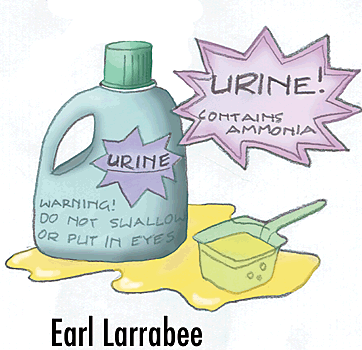


|

Illustration by Earl Larrabee
|
|
Arizona Daily Wildcat
Wednesday, July 13, 2005
Print this
taken weekly with a grain of salt
In early 18th-century Portugal, the Church owned two-thirds of the land.
Windmills were probably unknown in Europe until the 12th century, when returning Crusaders brought knowledge of them. They thereafter became familiar landmarks in Holland, England, France and Germany.
The Amazon River has more than 1,100 tributary streams.
A ryegrass plant, grown as part of a scientific experiment, put out roots totaling 378 miles in a single 14-month period.
“Journal” does not contain a single letter of the Latin word for “day” (dies) from which it derives. Among the intermediate steps in its development were the Latin diurnus, the Italian giorno and the French jour.
If the head of a cockroach is carefully removed, so as to prevent it from bleeding to death, the cockroach can “sur vive” for several weeks. When it dies, it is usually from starvation.
The Earth receives only one-half of one-billionth of the sun’s radiant energy. But in just a few days, it gets as much heat and light as could be produced by burning all the oil, coal and wood on the planet.
The explorer Edmund Hillary was the first man to reach the top of the world’s highest peak, Mount Everest. He was a leader of the first expedition that crossed the entire Antarctic continent by land from sea to sea.
Tuna swim at a steady rate of 9 mph for an indefinite period of time – and never stop moving. Estimates indicate that a 15-year-old tuna travels 1 million miles in its lifetime.
The food making up a single bite for a Tyrannosaurus Rex could feed a human family of four for an entire month.
In many countries, urine was used as a detergent for washing. One of urine’s major components, ammonia, is used in cleaning products. That’s right, you pee ammonia.
The burrowing rate of the gopher is equivalent to a man digging a tunnel nearly 18 inches in diameter and seven miles long in a period of ten hours.
Write a Letter to the Editor
|
|

|
